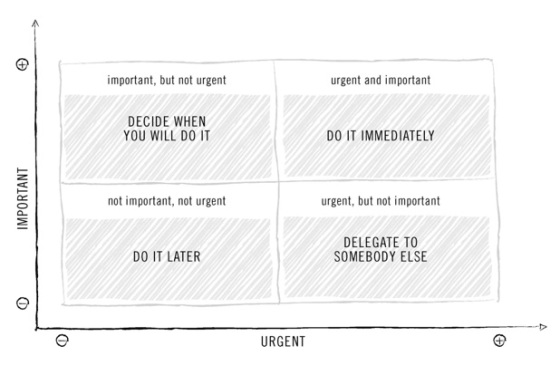This past October, eight executives from companies that are leaders in data analytics got together to share perspectives on their biggest challenges. All were the most senior executives with data-analytics responsibility in their companies, which included AIG, American Express, Samsung Mobile, Siemens Healthcare, TD Bank, and Wal-Mart Stores. Their backgrounds varied, with chief information officers, a chief data officer, a chief marketing officer, a chief risk officer, and a chief science officer all represented.1 We had seeded the discussion by asking each of them in advance about the burning issues they were facing.
For these executives, the top five questions were:
- Are data and analytics overhyped?
- Do privacy issues threaten progress?
- Is talent acquisition slowing strategy?
- What organizational models work best?
- What’s the best way to assure adoption?
Here is a synthesis of the discussion.
1. Data and analytics aren’t overhyped—but they’re oversimplified
Participants all agreed that the expectations of senior management are a real issue. Big-data analytics are delivering an economic impact in the organization, but too often senior leaders’ hopes for benefits are divorced from the realities of frontline application. That leaves them ill prepared for the challenges that inevitably arise and quickly breed skepticism.
The focus on applications helps companies to move away from “the helicopter view,” noted one participant, in which “it all looks the same.” The reality of where and how data analytics can improve performance varies dramatically by company and industry.
Customer-facing activities. In some industries, such as telecommunications, this is where the greatest opportunities lie. Here, companies benefit most when they focus on analytics models that optimize pricing of services across consumer life cycles, maximize marketing spending by predicting areas where product promotions will be most effective, and identify tactics for customer retention.
Internal applications. In other industries, such as transportation services, models will focus on process efficiencies—optimizing routes, for example, or scheduling crews given variations in worker availability and demand.
Hybrid applications. Other industries need a balance of both. Retailers, for example, can harness data to influence next-product-to-buy decisions and to optimize location choices for new stores or to map product flows through supply chains. Insurers, similarly, want to predict features that will help them extend product lines and assess emerging areas of portfolio risk. Establishing priorities wisely and with a realistic sense of the associated challenges lies at the heart of a successful data-analytics strategy.
Companies need to operate along two horizons: capturing quick wins to build momentum while keeping sight of longer-term, ground-breaking applications. Although, as one executive noted, “We carefully measure our near-term impact and generate internal ‘buzz’ around these results,” there was also a strong belief in the room that the journey crosses several horizons. “We are just seeing the tip of the iceberg,” said one participant. Many believed that the real prize lies in reimagining existing businesses or launching entirely new ones based on the data companies possess.
New opportunities will continue to open up. For example, there was a growing awareness, among participants, of the potential of tapping swelling reservoirs of external data—sometimes known as open data—and combining them with existing proprietary data to improve models and business outcomes. (See “What executives should know about open data.”) Hedge funds have been among the first to exploit a flood of newly accessible government data, correlating that information with stock-price movements to spot short-term investment opportunities. Corporations with longer investment time horizons will need a different playbook for open data, but few participants doubted the value of developing one.
2. Privacy concerns must be addressed—and giving consumers control can help
Privacy has become the third rail in the public discussion of big data, as media accounts have rightly pointed out excesses in some data-gathering methods. Little wonder that consumer wariness has risen. (Data concerns seem smaller in the business-to-business realm.) The flip side is that data analytics increasingly provides consumers, not to mention companies and governments, with a raft of benefits, such as improved health-care outcomes, new products precisely reflecting consumer preferences, or more useful and meaningful digital experiences resulting from a greater ability to customize information. These benefits, by necessity, rest upon the collection, storage, and analysis of large, granular data sets that describe real people.
Our analytics leaders were unanimous in their view that placing more control of information in the hands of consumers, along with building their trust, is the right path forward.
Opt-in models. A first step is allowing consumers to opt in or opt out of the collection, sharing, and use of their data. As one example, data aggregator Acxiom recently launched a website (aboutthedata .com) that allows consumers to review, edit, and limit the distribution of the data the company has collected about them. Consumers, for instance, may choose to limit the sharing of their data for use in targeted Internet ads. They control the trade-off between targeted (but less private) ads and nontargeted ones (potentially offering less value).
Company behavior. Our panelists presume that in the data-collection arena, the motives of companies are good and organizations will act responsibly. But they must earn this trust continually; recovering from a single privacy breach or misjudgment could take years. Installing internal practices that reinforce good data stewardship, while also communicating the benefits of data analytics to customers, is of paramount importance. In the words of one participant: “Consumers will trust companies that are true to their value proposition. If we focus on delivering that, consumers will be delighted. If we stray, we’re in problem territory.”
3. Talent challenges are stimulating innovative approaches—but more is needed
Talent is a hot issue for everyone. It extends far beyond the notoriously short supply of IT and analytics professionals. Even companies that are starting to crack the skill problem through creative recruiting and compensation strategies are finding themselves shorthanded in another area: they need more “translators”—people whose talents bridge the disciplines of IT and data, analytics, and business decision making. These translators can drive the design and execution of the overall data-analytics strategy while linking IT, analytics, and business-unit teams. Without such employees, the impact of new data strategies, tools, and methodologies, no matter how advanced, is disappointing.
The amalgam is rare, however. In a more likely talent scenario, companies find individuals who combine two of the three needed skills. The data strategists’combination of IT knowledge and experience making business decisions makes them well suited to define the data requirements for high-value business analytics.Data scientists combine deep analytics expertise with IT know-how to develop sophisticated models and algorithms. Analytic consultants combine practical business knowledge with analytics experience to zero in on high-impact opportunities for analytics.
A widespread observation among participants was that the usual sources of talent—elite universities and MBA programs—are falling short. Few are developing the courses needed to turn out people with these combinations of skills. To compensate, and to get more individuals grounded in business and quantitative skills, some companies are luring data scientists from leading Internet companies; others are looking offshore.
The management and retention of these special individuals requires changes in mind-set and culture. Job one: provide space and freedom to stimulate exploration of new approaches and insights. “At times, you may not know exactly what they”—data scientists— “will find,” one executive noted in describing the company’s efforts to provide more latitude for innovation. (So far, these efforts are boosting retention rates.) Another priority: create a vibrant environment so top talent feels it’s at the cutting edge of technology change and emerging best practices. Stimulating engagement with the data-analytics ecosystem (including venture capitalists, analytics start-ups, and established analytics vendors) can help.
4. You need a center of excellence—and it needs to evolve
To catalyze analytics efforts, nearly every company was using a center of excellence, which works with businesses to develop and deploy analytics rapidly. Most often, it includes data scientists, business specialists, and tool developers. Companies are establishing these centers in part because business leaders need the help. Centers of excellence also boost the organization-wide impact of the scarce translator talent described above. They can even help attract and retain talent: at their best, centers are hotbeds of learning and innovation as teams share ideas on how to construct robust data sets, build powerful models, and translate them into valuable business tools.
Our participants agreed that it’s worth creating a center of excellence only if you can locate it in a part of the company where data-analytics assets or capabilities could have a dramatic strategic impact. For some companies, this meant IT; for others, marketing and sales or large business units. At one company, for instance, the analytics agenda is focused on exploiting a massive set of core transactional data across several businesses and functions. In this case, the center of excellence resides within IT to leverage its deep knowledge of this core data set and its role as a shared capability across businesses.
The goal should be for these centers to be so successful at building data-analytics capabilities across the organization that they can tackle increasingly ambitious priorities. One executive suggests that as businesses build their analytics muscle, centers of excellence will increasingly focus on longer-term projects more akin to sophisticated R&D, with an emphasis on analytics innovation and breakthrough insights.
5. Two paths to spur adoption—and both require investment
Frontline adoption was the most important issue for many leaders. Getting managers and individual contributors to use new tools purposefully and enthusiastically is a huge challenge. As we have written elsewhere,2 companies simply don’t invest enough, in time or money, to develop killer applications that combine smart, intuitive design and robust functionality. However, our participants see two clear paths leading to broad adoption.
Automation. One avenue to spurring adoption works for relatively simple, repetitive analytics: creating intuitive end-user interfaces that can be rolled out rapidly and with little training. For example, a mobile application on a smartphone or tablet might give brand managers instant visibility into volume and sales trends, market share, and average prices. These tools become part of the daily flow of decision making, helping managers to figure out how intensely to promote products, when tactical shifts in pricing may be necessary to match competitors, or, over time, where to begin pushing for new products. According to one executive, “Little or no training is required” with simple tools like these. Provided they are “clear and well designed, with strong visualization qualities, end users will seek them out.”
Training. A second path requires significant investments in training to support more complex analytics. Consider a tool for underwriting small and midsize business loans. The tool combines underwriters’ knowledge and the power of models, which bring consistency across underwriting judgments, clarifying risks and minimizing biases. But underwriters need training to understand where the model fits into the underwriting process flow and how they can incorporate what the models and tools say into their own experience of customer characteristics and their business priorities.
Whichever path is chosen, it should start with pilot efforts and clear rules for making “go/no-go” decisions about the shift from exploratory analytics to a full-scale rollout. Some models don’t end up being predictive enough to deliver the desired impact; better to shelve them before they become investment sinkholes and undermine organizational confidence in analytics. Executives need to be willing to press “pause” and remind the organization that the failure of some analytics initiatives to materialize is nothing to worry about; in fact, this is the reason for pursuing a portfolio of them. The combination of success stories and hard-nosed decisions to pull the plug is all part of creating a climate where business units, functions, top management, and frontline employees embrace the transformational possibilities of data analytics.
About the authors
Brad Brown is a director in McKinsey’s New York office, David Court is a director in the Dallas office, and Tim McGuire is a director in the Toronto office.
The authors would like to acknowledge the contributions of Brian Tauke and Isaac Townsend to the development of this article.






